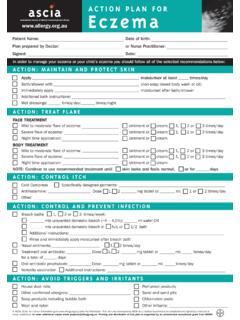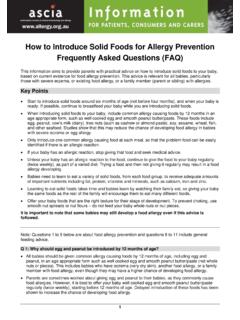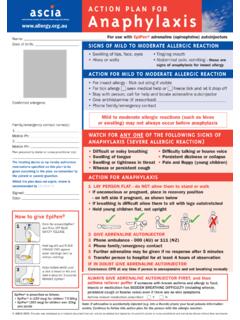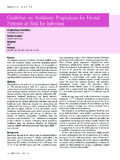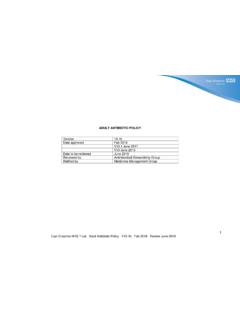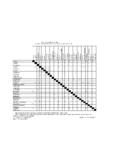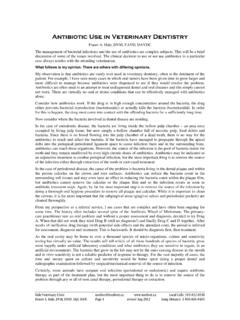Transcription of Antibiotic Allergy Clinical Update
1 Disclaimer: ASCIA information is reviewed by ASCIA members and represents the available published literature at the time of review. The content of this document is not intended to replace professional medical advice and any questions regarding a medical diagnosis or treatment should be directed to a medical practitioner. ASCIA 2014 Antibiotic Allergy Clinical Update This Clinical Update has been adapted, with permission, from the Allergy section of the Therapeutic Guidelines for Antibiotics. The main purpose of this document is to provide an evidence based, quick reference guide to assist primary health care physicians including general practitioners, paediatricians and nurses, in the management of patients with Antibiotic Allergy . Contents 1. Introduction 2 2. Types of Antibiotic hypersensitivity 2 IgE-mediated immediate hypersensitivity IgE-independent reactions Delayed reactions 3.
2 Diagnosis of Antibiotic hypersensitivity 3 Clinical History Skin and blood testing Cross reactivity 4. Management of patients reporting penicillin hypersensitivity 4 References 5 Further Information and resources 6 ASCIA INFORMATION FOR HEALTH PROFESSIONALS 2 1. Introduction While less than 20% of all adverse drug reactions are immune mediated, it is common for a patient to give a history of being 'allergic' to an antimicrobial, usually penicillin. If penicillin is administered to a highly allergic patient, fatal anaphylaxis can occur. However, it is important to consider: Most patients who report a penicillin Allergy have a vague history and are not allergic at all. It is also important not to deny patients treatment with an antimicrobial unnecessarily, especially if they have a serious infection for which that antimicrobial would be the most effective treatment.
3 Hence, evaluation for drug Allergy involves a risk-benefit analysis based on history, Allergy test results (where available) and, if indicated, direct challenge under medical supervision. Risk factors for the Clinical expression of Antibiotic Allergy include: Previous exposure (which may have been non-therapeutic such as in utero or through food products). Aged between 20 and 49 (children and the elderly are at lower risk). Route of administration ( allergic reactions to penicillin occur more frequently following parenteral rather than oral administration). 2. Types of Antibiotic hypersensitivity IgE-mediated immediate hypersensitivity While many reactions are labelled as 'allergic', true IgE-mediated immediate hypersensitivity is characterised by the development of urticaria, angioedema, bronchospasm or anaphylaxis (with objectively demonstrated hypotension, hypoxia or tryptase elevation), usually within one hour of drug administration.
4 If there is more delay, there is less likelihood that the reaction is IgE-mediated. Anaphylaxis is more likely with parenteral rather than oral administration of antibiotics. For penicillin, anaphylaxis occurs at an estimated frequency of 1 to 4 cases per 10 000 courses, with 10% of these reactions being fatal. A clear history of an IgE-mediated reaction means the drug should be avoided, unless the patient can be shown to be no longer allergic by formal skin testing with validated reagents followed by confirmatory drug challenge, or it is introduced using a desensitisation protocol. IgE-independent reactions Reactions mimicking IgE-mediated Allergy ( responses to vancomycin infusions such as 'red-man' syndrome) involve the direct release of vasoactive mediators ( histamine) and may be ameliorated by prophylactic antihistamines and slowing the infusion rate. Delayed reactions Macular, papular, or morbilliform rashes occurring several days after commencement of treatment are more common than immediate reactions, and may be caused by the infection or its treatment.
5 Such reactions are usually T-cell (not IgE) mediated. Skin testing often proves negative. Delayed reactions commonly occur in patients with intercurrent Epstein-Barr virus (especially combined with aminopenicillin treatment) or HIV infection, and such reactions are often not reproducible with deliberate challenge when the patient is well. Viral examthems are common in children. Delayed rashes, especially with aminopenicillins, are not strongly predictive of future reactions and repeat exposure to beta lactams is not ASCIA INFORMATION FOR HEALTH PROFESSIONALS 3 necessarily contraindicated. Patch testing is not recommended for these reactions. The only way to ascertain non-IgE mediated reactions is direct challenge under medical supervision. Three types of delayed reactions warrant special mention: (i) Serum sickness-like reaction, characterised by vasculitic rashes, arthralgia/arthritis, flu-like symptoms and sometimes fever and proteinuria.
6 This response is triggered more commonly with cefaclor than other cephalosporins (also commonly triggered by sulfonamides), and commences several days after the onset of treatment. (ii) Drug rash with eosinophilia and systemic symptoms (DRESS), typically characterised by fever, peripheral blood eosinophilia, rash +/- desquamation and hepatic dysfunction, where re-exposure can be fatal. (iii) Stevens-Johnson syndrome/toxic epidermal necrolysis, the severest cutaneous skin reaction, commonly associated with sulphonamides and nevirapine. These delayed reactions and variants are a contraindication to further drug exposure (including desensitisation). A photographic record of the rash can help with subsequent specialist assessment. Patients with known hypersensitivity should be strongly advised to wear a medical bracelet or necklace advising of their Allergy . 3. Diagnosis of Antibiotic hypersensitivity Clinical History The diagnosis of Antibiotic Allergy is rarely clear-cut.
7 It is often not clear whether the symptoms are due to the patient's underlying condition or to the treatment. For example, rashes may be caused by the underlying infection or occur as a result of Antibiotic Allergy . The problem becomes even more complicated when the patient is taking more than one drug. Antibiotic hypersensitivity is usually diagnosed on the basis of Clinical history, especially the timing of the reaction after antimicrobial use. If the patient reports an Allergy , specific details about the nature of the reaction, the timing, concurrent illnesses and drugs, and the outcome should be sought, documented and provided to the Clinical immunology/ Allergy specialist. Skin and blood testing There is no single test for Antibiotic Allergy . A basic problem in diagnosing Antibiotic Allergy by immunological methods is the fact that most antibiotics are not complete antigens but rather haptenic metabolites of the parent drug coupled with a carrier tissue protein.
8 With the exception of penicillin, immunoreactive drug metabolites have rarely been identified. The role of Allergy testing is limited largely to immediate (IgE-mediated) hypersensitivity. The only validated skin testing approach involves the use of penicillin major and minor determinants (where available) in penicillin Allergy . It is important to note that negative reactions may be seen if performed several months or years after the event. Amoxycillin side chain specific immune reactions warrant specific amoxycillin skin testing. Intradermal skin testing is difficult to do in children under 10 years of age. Skin testing should only be performed by specialists due to the risk of anaphylaxis. Most nonpruritic maculopapular rashes will not be predicted by skin testing. Blood Allergy testing (ImmunoCAP) is available for penicillin G, penicillin V, amoxicillin and Cefaclor through commercial laboratories and is most accurate when measured close to the time of the event.
9 Tryptase elevation on a sample collected within 1 4 hours after a reaction is consistent with mast cell degranulation. A blood count (looking for eosinophilia) and biochemistry (looking for raised liver enzymes) may also indicate that a reaction is ASCIA INFORMATION FOR HEALTH PROFESSIONALS 4 related to drug administration. Eosinophilia and/or abnormal liver function tests are often due to T-cell/non-IgE-mediated reactions rather than IgE-mediated reactions. It is important to note that results of Allergy testing may become negative with time from the event, and that testing may be negative even in patients who have current Allergy . Thus, a negative test in the presence of a convincing history does not guarantee safe administration. For IgE-mediated Antibiotic Allergy , antimicrobial introduction can be judiciously employed where skin and intradermal tests are negative, or in circumstances where history suggests a low risk and alternative drugs are clearly inferior.
10 This should only be done under medical supervision, after consultation with a Clinical immunology/ Allergy specialist. In these cases, the degree of suspicion surrounding possible life-threatening reactivity will dictate whether a desensitisation protocol is preferable to oral challenge. Cross-reactivity Semi synthetic penicillins such as ticarcillin and piperacillin contain the same nucleus as penicillin G. Sensitivity to these antibiotics can therefore be assessed by skin testing to penicillin as well as the parent drug. Cephalosporins share a common beta-lactam ring with the penicillins but the degree of cross-reactivity is quite low. Around 3-7% of those with penicillin Allergy , for example, may have allergic reactions to cephalosporins as well. Monobactams such as aztreonam may be safely administered to penicillin allergic subjects but carbapenems such as imipenem represent a significant risk to penicillin-allergic patients and should be withheld from penicillin skin test-positive patients.
